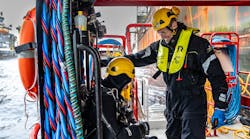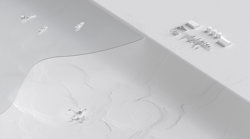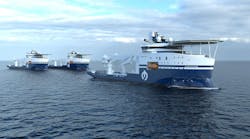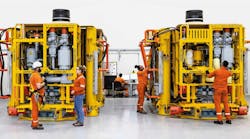Offshore staff
Subsea structural integrity development recognized at OTC 2022
U.K.-based Aquatec received two awards at the 2022 Offshore Technology Conference (OTC) last week.
The first was the Small Business Spotlight on New Technology Award for the company’s KINEKtron retrofit subsea strain measurement system, which measures and relays strain levels on structural tubular members, pipelines and other load-bearing infrastructure.
The technology also won ASME’s (American Society of Mechanical Engineers) Woelfel Best Mechanical Engineering Achievement Award. This recognizes equipment shown at OTC for its innovation and practical use of mechanical engineering in solving problems, improving design or maximizing performance.
Tony Mekky, engineering manager with Aquatec, said KINEKtron combines a technique for precise strain transfer with high speed, extended endurance datalogging, optical and acoustic communications, and advances in attachment, installation and activation—all in one device.
Main applications are retrofit subsea strain monitoring, mooring, pipelay and wind turbine monopole strain monitoring.
TechnipFMC gains further subsea work for Yellowtail project offshore Guyana
Esso Exploration and Production Guyana has contracted TechnipFMC to supply six HP/HT flexible risers for the Yellowtail development in the Stabroek Block offshore Guyana.
In addition, TechnipFMC has received notice to proceed with the previously declared contract for the subsea production system, following the Stabroek partners’ final investment decision on the project in April. The initial award was announced in November 2021.
TechnipFMC will provide project management, engineering, manufacturing and testing capabilities for the subsea production system, comprising 51 enhanced vertical deepwater trees and associated tooling, plus 12 manifolds, associated controls and tie-in equipment.
Gripper system supports installation of offshore Taiwan wind farm monopiles
In April, Osbit delivered a monopile gripper system to Yunneng Wind Power Co. for the Yunlin Offshore Wind Farm project in Taiwanese waters.
The system enables monopile installation from a moored floating vessel and helps maintain the position and verticality of the foundations. It is deployed and stowed using a deck rail skidding system.
According to Osbit, the gripper design is adaptable for future projects, accommodating monopiles in diameters ranging from 6.5 m to 10 m (21 ft to 33 ft), with push forces up to 300 metric tons (330 tons). In addition, the system allows swift mobilization and can be adapted to suit different vessel structures.
It incorporates an integrated near-pile noise mitigation system, said to minimize the subsea noise and vibration associated with piling activities, and bubble curtain rings that dampen the energy emitted to the environment.
The system was fabricated in Singapore, with various sub-systems shipped from the U.K. and EU suppliers. A project team worked on site in Singapore throughout construction in cooperation with the fabricator Baker Engineering.
The pile gripper will be mobilized onto the DLS-4200 vessel for deployment in the next few months, for use with an upending hinge that Osbit also is supplying.








